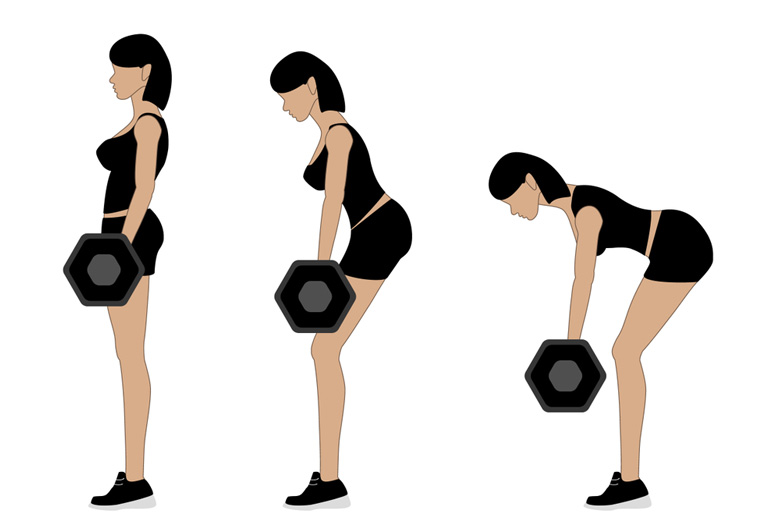The conventional deadlift is indeed a staple in strength training, favored by both beginners and experienced gym enthusiasts for its effectiveness in building muscle and strength, particularly in the core and posterior chain. Typically performed with barbells, it is renowned for its ability to increase muscle mass and endurance. However, variations such as the Romanian deadlift offer distinct advantages. The Romanian deadlift targets the posterior chain similarly to the conventional deadlift but with a greater emphasis on the hamstrings and glutes.
It involves a hip hinge movement pattern with less knee flexion, making it a valuable exercise for developing hip strength and mobility while minimizing stress on the lower back. Additionally, the Romanian deadlift can help improve posture and reduce the risk of injury by reinforcing proper movement mechanics. As such, incorporating variations like the Romanian deadlift into one’s training regimen can provide a well-rounded approach to strength development and injury prevention.
Both the deadlift and the Romanian deadlift are effective exercises for targeting the posterior chain, which includes muscles such as the hamstrings, glutes, and lower back. While both exercises have similarities, they also have distinct differences in terms of technique and the muscles they emphasize. Whether one is “better” than the other depends on your individual goals, preferences, and biomechanics.
Deadlift:
- Muscles Worked: The conventional deadlift targets a wide range of muscles, including the hamstrings, glutes, lower back, upper back, traps, and grip muscles. It’s considered a compound exercise that engages multiple muscle groups simultaneously.
- Technique: In a conventional deadlift, you start with the barbell on the floor and lift it by extending your hips and knees simultaneously. The movement involves bending at the hips and knees, maintaining a relatively upright torso position, and keeping the bar close to your body throughout the lift.
- Range of Motion: The deadlift involves lifting the weight from the floor to a standing position, requiring a greater range of motion compared to the Romanian deadlift.
Romanian Deadlift (RDL):
- Muscles Worked: The Romanian deadlift primarily targets the hamstrings and glutes, with less emphasis on the lower back compared to the conventional deadlift. It’s also effective for strengthening the muscles of the posterior chain.
- Technique: In the Romanian deadlift, you start from a standing position with the barbell at hip height. The movement involves hinging at the hips while maintaining a slight bend in the knees, allowing the barbell to lower towards the floor while keeping the back straight. Unlike the conventional deadlift, the Romanian deadlift emphasizes hip hinge movement without significant knee flexion.
- Range of Motion: The Romanian deadlift typically involves a smaller range of motion compared to the conventional deadlift since you’re not starting from the floor. The barbell descends to around knee level or slightly below, depending on individual flexibility.
Which One Is Better?
- Strength and Power: If your goal is to build overall strength and power, the conventional deadlift may be more beneficial due to its ability to engage multiple muscle groups simultaneously and its higher demand for total-body strength.
- Hamstring and Glute Development: If you’re specifically targeting hamstring and glute development while minimizing lower back stress, the Romanian deadlift might be a better choice.
- Injury Risk: The Romanian deadlift may pose a lower risk of lower back injury for individuals with pre-existing back issues or limited mobility since it involves less spinal loading compared to the conventional deadlift.
Ultimately, both exercises can be valuable additions to a well-rounded strength training program. It’s essential to incorporate a variety of exercises to target different muscle groups and movement patterns effectively. Consider including both deadlift variations in your routine and adjust based on your individual goals, preferences, and any specific considerations such as injury history or biomechanics. Additionally, proper technique and gradual progression are crucial for maximizing the benefits of either exercise while minimizing the risk of injury. If you’re unsure which exercise is best for you, consulting with a qualified fitness professional can provide personalized guidance based on your needs and objectives.
Disclaimer:
The information contained in this article is for educational and informational purposes only and is not intended as a health advice. We would ask you to consult a qualified professional or medical expert to gain additional knowledge before you choose to consume any product or perform any exercise.







